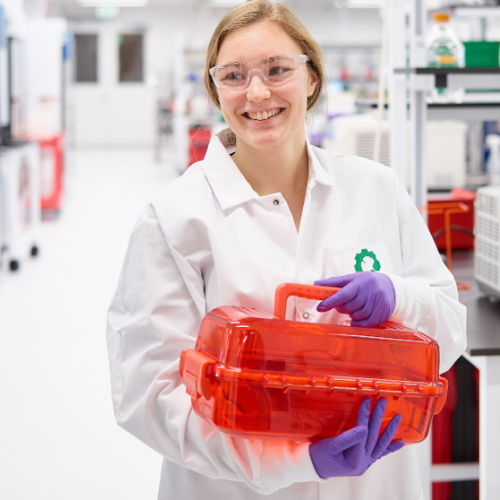A while ago, This American Life did a short segment about a hot dog factory. In the segment, the Vienna Sausage Company had built a brand new, state-of-the-art facility on the other side of Chicago from their old location. It was gleaming, stainless steel, and built to perfection… except their hot dogs just didn’t taste as good. They lacked their signature snap and the color came out all wrong.
So, they spent a year and a half trying to figure out how to replicate their old hot dogs. They made sure the ingredients were exactly right, in the exact proportions. They made sure they were following their tried and true process. They began to suspect that perhaps the water was different on their side of Chicago.
I keep this story in mind because it reminds me of the high tech protocols that are developed and executed on the edges of science with all of our modern equipment and technology and how at times just like in the segment, the “right” steps are “so secret, even the [scientists] didn’t know about it”.
As we’re making biology easier to engineer at Ginkgo, we’re striving to peel back the veil on the underlying biological principles that enable our protocols and science so we too can transfer the results we achieve to other locations, conditions, and timings as reliably as possible with the proper color and snap! To build robust models of biology and create reusable insights, we’re creating tools to both maintain a structured record of the scientific steps we take (our experimental protocols) and the observations we make and play them back with both scientists following unambiguous steps and automated robots executing sample transfer, perturbation, and data acquisition. This toolchain then allows scientists to express their intent at the level of investigating the effects of amino acid changes on protein activity while abstracting away the complexity of the underlying processes such as the steps involved in the computational design of amino acid changes, the order and synthesis of the DNA sequences for those changes, building those changes into the required biological strains, growing those strains and express our proteins of interest, and testing protein activity. This in turn creates tight linkages among the intent of the experiment, the work done and the data collected.
We think about this in three phases. First, how do we create appropriate abstractions for the science we execute and how do we associate data and meta-data together in a meaningful composite? Second, what insights can we gain by analyzing natural experimental variation and the outcomes of those experiments, what new experimental variations does this suggest, and what can those associations tell us about the underlying biological contexts? And finally, how can we use this information to understand science and meaningful variation better, engineer organisms more prescriptively, and create protocols and biological alterations that are not only reproducible but also robust?
In the case of the hot dogs, it ended up being all down to an employee named Irving, who hadn’t moved with the company to the new location. To get the hot dogs from where they’re stuffed to where they’re smoked, Irving would take a circuitous thirty-minute trip through the factory. In the new factory, the stuffing room and the smoking room were more directly connected so the hot dogs didn’t have a chance to warm up and “age”. Once they figured it out, they built a whole room that simulates the journey that Irving took those hot dogs on before.
As we explore organism engineering and build out more scaled and robust platforms for routinely engineering biology, we’re looking to design systems that help us to observe, measure, and highlight these hidden factors so that we understand the underlying science and have better predictability in scale-up and transfer. In addition, we want to understand experimental reproducibility and create protocols that are robust to more variation. Overall, this is fundamental to pushing the bounds of science and making meaningful models of our engineered perturbations. If you’re interested in more deeply understanding biology and creating the systems necessary to unambiguously describe and execute scientific protocols, please reach out and get in touch.
(Feature photo of Bioworks 5 by Kris Cheng)
